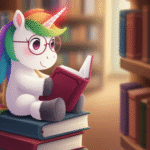By 2025, anyone will be able to hop onto MidJourney, Stable Diffusion, or DALL·E 3, type in a few words, and voilà — instant “design inspiration” in just 30 seconds. The same goes for interface design: tools like Uizard, Galileo AI, and Figma AI can quickly generate user interface screens.
It might seem like designers are becoming a thing of the past. But in reality, it’s quite the opposite: without a solid understanding of visual literacy and the keen eye of a trained designer, you’re merely pushing buttons to generate prompts. With genuine design inspiration and hands-on practice, you transform into the conductor of your creative symphony — and AI becomes your orchestra.
AI vs Designer: What’s the Difference?
AI has been trained on billions of images, but it lacks an understanding of context. On the other hand, designers may work with fewer examples, yet they cultivate a user-centered design mindset. Take, for instance, a mobile app designed for women aged 45 and above. AI might produce a flashy Instagram-style interface, complete with pink buttons and images of 20-year-old models. A designer, however, with a keen sense of visual literacy, would opt for: Larger typography to enhance readability.
A soft pastel color palette instead of bright neon shades. Authentic photos featuring women from the same age group.
👉 This highlights the contrast between mere data patterns and genuine human empathy. While AI can churn out visuals, it’s the designer who truly makes them connect on a deeper level.
Best Resources to Train Your Designer Eye
Building visual literacy goes beyond just scrolling through pretty pictures; it’s about understanding the principles that make design effective. Here are some of the best websites and apps for design inspiration in 2025:
- Mobbin – a vast library of mobile app UI/UX patterns.
- PageCollective / Landbook – a treasure trove of modern landing page design inspiration.
- Pttrns – a categorized collection of mobile interface patterns.
- Awwwards & Muz.li – your go-to sources for the latest web design trends.
- Figma Community – a hub for free UI libraries and design systems.
- Apple Human Interface Guidelines & Google Material Design – the gold standards in interface design.
- Canva Templates & Notion Templates – best ai tools for ux designers 2025 that millions use every day.
These resources aren’t just “pretty galleries.” They provide real-world design examples that can help you sharpen your eye for UX patterns and user-centered design.
Beyond Dribbble and Behance: Where to Get Real Design Inspiration
Looking for design inspiration beyond the usual suspects like Dribbble and Behance? While those platforms are visually stunning, they can sometimes feel a bit removed from real-world applications. If you’re after practical ideas, check these out:
– App Store / Google Play – dive into the top apps and take a closer look at their user interfaces.
– YouTube – find UX/UI case studies, usability tests, and design critiques that can spark your creativity.
– Big names like Apple, Spotify, Netflix, Airbnb, and Amazon – these industry leaders showcase data-driven design that you can learn from.
– Pinterest – a great spot for quickly spotting trends in colors and visual styles.
– Your everyday surroundings – keep an eye on packaging, billboards, banking apps, and even government websites for inspiration.
👉 Remember, visual literacy means learning from everything around you, not just the polished portfolios!
How AI Can Help You Build Visual Literacy
Instead of seeing AI as a competitor, think of it as a valuable training partner.
Reference Analysis with Prompts
Upload an image into ChatGPT and ask: “Can you break down the composition, typography, and color scheme for me?” This approach allows you to recognize design patterns just like a machine would.
Collect and Compare with Eagle App / Are.na / PureRef
Create your own design reference library and challenge yourself: Which interface offers a better user experience? Then, take a look at real case studies to see how they stack up.
Experiment with AI UI Generators (Galileo AI, Uizard)
Generate a variety of screens, adjust the prompts, and analyze the outcomes. This practice will sharpen your pattern recognition skills.
Ask AI for Critical Feedback
Save an interface (like a Spotify screen), upload it to AI, and prompt: “What makes this design effective? What are its strengths and weaknesses?” This gives you a well-rounded perspective, combining insights from both human and machine.
Conclusion
AI has the ability to create stunning visuals. However, true design inspiration and visual literacy come from understanding the people behind the screens. Think of AI as the orchestra, while a designer with a keen eye acts as the conductor. If you want to excel in 2025, don’t just rely on AI, hone your skills, gather references, and find that sweet spot between creativity and technology.
